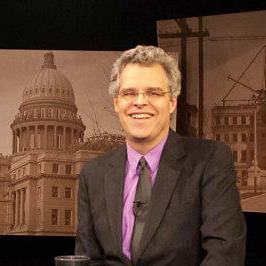In a new report, the Idaho Freedom Foundation brands the state’s teacher salary “career ladder” a five-year failure.
But make no mistake. The report from the conservative lobbying group is clearly an early salvo in the debate over the next career ladder.
“The findings in this report do not support adding another rung to the career ladder or even continuing this approach to salary allocation by the state of Idaho,” co-authors Lindsay Atkinson and Fred Birnbaum write.

The timing is significant. The group’s report comes as the state is paying out the fifth and final installment on the career ladder, and as state leaders are contemplating what to do next.
This summer, members of Gov. Brad Little’s education task force began discussing continuing the five-year plan to reward veteran teachers. State superintendent Sherri Ybarra, a member of the Little task force, picked up on this theme in late August. She inserted $40 million in teacher pay raises into her proposed 2020-21 education budget.
There is already some considerable momentum behind another round of raises. So, ultimately, the political overtones of the Freedom Foundation report are more interesting than the actual numbers contained within it.
That’s because, as far as the findings go, there isn’t much in the report that should come as much of a surprise.
Yes, salaries in some districts and charters closely align with the framework of the career ladder, while other districts and charters use a very different approach. That’s because the career ladder was always designed to be a method to distribute money for teacher pay. The framework — the salary structure itself — was always supposed to be optional. The state doesn’t set teacher salaries, save for a minimum salary, now at $38,500.
And, yes, teachers in some school districts can earn a lot more than their colleagues in other communities. The report singles out a couple of Idaho’s higher-paying districts: Boise and Blaine County. But as Idaho Education News reported in 2015, just as the state adopted the career ladder, the salary gaps between districts can be wide. We also reported that the career ladder wouldn’t necessarily close these gaps.
(It’s complicated, of course. In some cases, districts pay more than their neighbors because they can: Both Boise and Blaine County have unique authorities to collect property tax levies that they use to bolster state funding for teacher pay. In other cases, districts pay more because they believe they must, in order to keep veteran educators from taking higher-paying jobs in neighboring states.)
In other words, teacher salaries are a hodgepodge across the state. No surprise there, considering salaries are set locally, by 115 school districts and more than 50 charter schools.
The question, then, is whether the state should put more money into salaries.
In its report, and in a Birnbaum guest opinion, the Freedom Foundation report questions the main premise behind a new career ladder: the argument that the state needs to invest an infusion of money to help veteran teachers. Even though the career ladder was designed to boost pay for new teachers and less experienced teachers, the foundation says veteran teachers have fared relatively well, while teachers on the lower rungs of the ladder aren’t getting all the money the state has put into salaries. And along the way, the foundation calls out Ybarra for proposing a new round of raises, and takes a jab at the state’s teachers’ union.
“Another rung (of the career ladder) will likely lead the Idaho Education Association to negotiate even bigger pay increases for veteran teachers, thereby heightening the gap between veterans and mid-career teachers, and between urban and rural districts — continuing the pull from rural to urban districts.”
It should be noted here that foundation President Wayne Hoffman has an ideological bent when it comes to education funding.
“I don’t think government should be in the education business,” Hoffman wrote in February. “It is the most virulent form of socialism (and indoctrination thereto) in America today.”
That opinion runs counter to the state’s Constitution — which mandates a free and uniform system of public schools. And it puts Hoffman at odds with pretty much the state’s entire education and political leadership.
But even so, that doesn’t guarantee the state funds another rung of the career ladder, over the objections of Hoffman and the foundation.
Another round of teacher pay raises carries a significant price tag, in what figures to be a tight budget year. Money could be hard to come by. Which means legislative support could be hard to come by — especially in the Idaho House, where a fair number of conservative lawmakers hew closely to the foundation’s agenda.
The first round of the career ladder enjoyed five years of robust support in the Statehouse. Five years of K-12 budgets — including the $250 million in pay raises — sailed through the Legislature with nearly unanimous support.
Round Two might be more complicated.
